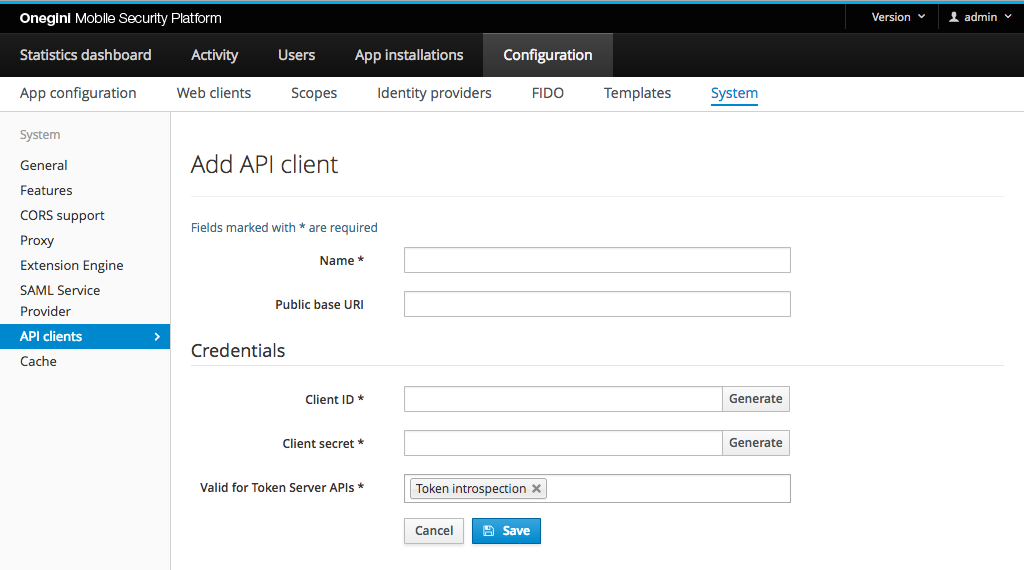Resource gateway configuration
In the overall architecture it is the responsibility of the resource gateway to grant or block access to specific APIs or resources. To evaluate if a client is allowed to use a resource, the resource gateway must validate an access token. OneWelcome Access provides a APIs to validate access tokens. Access to these APIs is restricted for OAuth clients with a specific role. Hence, the resource gateway acts as an OAuth client and needs to be configured as one.
Network configuration
A resource gateway uses the /oauth/api/v2/token/introspect endpoint of OneWelcome Access for token introspection.
The network configuration should be adjusted to allow communication to this endpoint. Especially network traffic from the resource gateway to OneWelcome Access must not be blocked by firewalls.
Configuration: an API client as resource gateway
This configuration is needed for token introspection.
An OAuth API client can be configured as a resource gateway via the admin console. In order to create a resource gateway, go to the Configuration section
in the admin console and open the System tab and API clients section. Here you can find all the existing API clients. To add a new one, click on the Add
button. The following form will appear:

A resource gateway requires a few fields to be filled in the form:
- Name - The resource gateway is referenced using the value from this field.
- Client ID, Client secret - This pair of values is used to authenticate the resource gateway when it communicates with OneWelcome Access. Those values can be filled or generated. This information is sensitive and should be treated accordingly.
- Valid for APIs - The resource gateway uses scope:
Token introspection, and that one must be selected in this field. - Public base URI - The base uri (public endpoint) of the resource gateway.